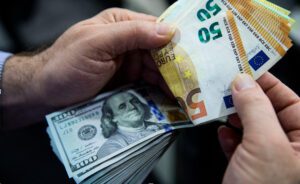
The euro, which fell below parity with the U.S. dollar in September 2022, is recovering thanks to a cooling energy market, reduced fears of recession and a hawkish stance of the European Central Bank (ECB).
The euro, which has gained almost 13% in the last 3.5 months, was also helped by a general weakening of the U.S. currency: the dollar ICE index, which rose to a 20-year high in September, has since lost about 10%.
As of 11:15 a.m. on Monday, the euro/dollar pair was trading at $1.0895, up from $1.0857 at the close of the previous session.
The Federal Reserve (Fed) raised its benchmark rate by 425 basis points last year, the fastest rate hike for a single year in four decades, the Financial Times noted. The widening of the spread between U.S. and other interest rates triggered an influx of investor funds into U.S. assets, which provided strong support for the U.S. dollar. This put additional pressure on the euro, already weakened by the rise in energy prices due to the full-scale war unleashed by Russia against Ukraine and fears of a downturn in the region’s economy.
Recently, however, trends have changed somewhat.
“For several years, there were virtually no alternatives to the dollar,” says Andreas König, head of currency markets at Amundi. – Now the capital returns to the economy outside the U.S., as there are other attractive options for investment.
In particular, the expert notes the increase of foreign capital inflow to China after the lifting of quarantine restrictions by the authorities of the country. China’s decision to abandon its policy of zero tolerance for COVID-19 provoked higher forecasts for the global economy by leading experts. This also puts pressure on the dollar, which usually strengthens in periods of macroeconomic stress.
At the same time, the outlook for Europe has recently improved, notes the FT. Gas prices have fallen due to a mild winter in the region, allowing the economy to avoid the expected deep recession.
Emerging signals of weakening inflation in the U.S. means that the U.S. Central Bank could continue to slow the pace of rate hikes. In December, the Fed increased the rate by 50 bps. – up to 4,25-4,5% per annum after its rise by 75 bp following the results of the previous four meetings.
The market expects further reduction in the Fed’s policy tightening and believes that the central bank may begin to reduce the rate in the second half of this year.
The ECB raised key interest rates by a total of 250 bps last year.
“Lower rates will eliminate a major advantage the dollar has,” said MUFG currency analyst Lee Hardman, who expects the ECB’s deposit rate to rise to 3.25 percent from 2 percent by the middle of this year. – Last year, the Fed was the leader among other global central banks in raising rates, but now the ECB has become more hawkish.
Strengthening the divergence in policy between the Fed and the ECB could lead to a rise in the euro to $ 1.12 by early 2024, said Hardman.
The expert, however, cautions against excessive optimism about the euro exchange rate against the dollar, given the continuing threat of rising energy prices that could affect the volume of European trade.
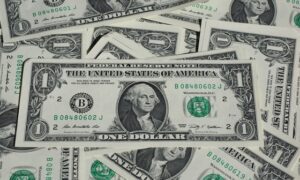
The dollar is getting cheaper against the euro and the pound sterling and is getting stronger against the yen.
Signals of a weakening U.S. economy and recent comments from Federal Reserve (Fed) leaders give investors hope that the U.S. Central Bank will continue to slow the pace of raising the benchmark interest rate.
Federal Reserve Board of Governors member Christopher Waller said last Friday that the central bank has already raised the rate substantially – and “it’s time to slow down, but not stop” its hike.
“I am in favor of a 25 basis point (bps) rate hike at this point in the Fed’s upcoming meeting,” Waller said during a speech at the U.S. Council on Foreign Relations.
“We still have a long way to go to get inflation back to the 2% target, and I believe I will support further tightening of monetary policy,” Waller was quoted by Market Watch.
Federal Reserve Bank of Kansas City (FRB) President Esther George told Bloomberg TV that while inflation has slowed, it is still well above the target.
“To stay true to our price stability mandate, we need to be a little more patient,” she said.
In December, the Fed increased the rate by 50 bps. – To 4,25-4,5% per annum after its rise by 75 bp at the end of the previous four meetings, and the market is waiting for a further slowdown in policy tightening, taking into account signals of weakening inflation and economic activity in the U.S.
The European Central Bank (ECB) may have to continue raising the rate at a rate of 50 bp in both February and March, ECB Governing Council member and Dutch central bank governor Klaas Knott told the Dutch broadcaster WNL. According to Knott, the rate hike will continue in the coming months.
In a separate interview he gave to the Italian newspaper La Stampa, Knott said that it was “too early” to talk about the possibility of a slowdown in the ECB’s rate increases by the summer.
The ECB raised key interest rates by a total of 250 bps last year. Experts polled by Bloomberg expect the ECB’s deposit rate, currently at 2 percent, to eventually rise to 3.25 percent.
The ICE-calculated index showing the dollar’s dynamics against six currencies (euro, Swiss franc, yen, Canadian dollar, pound sterling and Swedish krona) lost 0.22% in trading Monday, while the broader WSJ Dollar Index lost 0.09%.
The euro/dollar pair is trading at $1.0893 as of 8:15 a.m., up from $1.0857 at market close on Friday.
The pound/dollar exchange rate rose to $1.2415 from $1.2394 the day before.
The dollar’s value against the yen is 129.92 yen against 129.5 yen in the previous session.
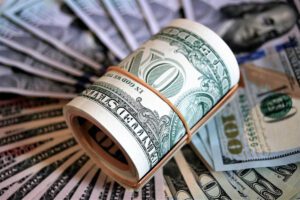
The U.S. dollar is stable against the euro and getting stronger against the yen and the pound sterling during trading on Friday.
The ICE-calculated index showing the dollar’s dynamics against six currencies (euro, Swiss franc, yen, Canadian dollar, pound sterling and Swedish krona) added 0.07% during trading, while the broader WSJ Dollar Index gained 0.08%.
The euro/dollar pair is trading at $1.0835 as of 7:15 a.m. Ksk, up from $1.0833 at market close Thursday.
The pound/dollar exchange rate fell to $1.2382 from $1.2391 the day before.
Traders continue to follow the statements of U.S. Central Bank executives, who are mostly in favor of further raising the benchmark interest rate, despite signs of a weakening U.S. economy.
European Central Bank (ECB) governor Christine Lagarde also made clear that the regulator has no plans to relax its efforts in the fight to return inflation to target levels.
“Inflation by all measures, from every angle you look at it, is excessively high,” Lagarde said at an economic forum event in Davos. – “We will stick with our current policy course until the point where keeping rates at levels that limit economic activity proves to be long enough to ensure that inflation returns to 2%.
The dollar is at 129.10 yen against the yen at 128.43 yen in the previous session.
The yen was getting cheaper on Friday, correcting after a strong rise the day before, despite data on an acceleration of inflation in the country, raising expectations of changes to the monetary policy by the Bank of Japan.
Consumer prices in Japan excluding fresh food (a key indicator tracked by the country’s central bank) rose 4 percent in December from the same month a year earlier, the fastest pace since December 1981, data from the country’s Ministry of Internal Affairs and Communications showed.
The figure exceeded the Bank of Japan’s 2 percent target for the ninth consecutive month.
Overall inflation in Japan last month was also 4% year on year, accelerating from 3.8% in November. The rate was the fastest since January 1991.
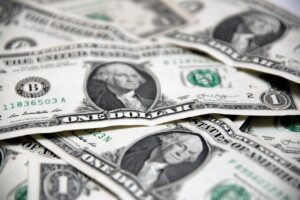
The U.S. dollar is getting stronger against the euro and the pound sterling after declining in the previous session, but it keeps getting cheaper in pair with the yen.
The ICE index showing the dollar’s movement against six currencies (euro, Swiss franc, yen, Canadian dollar, pound and Swedish krone) is gaining 0.16%, while the broader WSJ Dollar Index is 0.12%.
The ICE dollar index fell sharply Thursday after the release of U.S. inflation data, near its lowest level in seven months.
U.S. consumer prices (CPI) rose 6.5% in December compared to the same month last year, the nation’s Labor Department said Thursday. Thus, inflation slowed from 7.1% in November to its lowest level since October 2021. Consumer prices fell 0.1% from the previous month, the first month-over-month decline since 2020.
Traders believe the Federal Reserve (Fed) may slow the pace of prime rate hikes to 25 basis points at its next meeting due to slowing inflation, Trading Economics noted.
The euro/dollar pair is trading at $1.0840 as of 8:00 a.m., up from $1.0854 at the close of the previous session. The pound/dollar exchange rate dipped to $1.2182 during trading on Friday from $1.2212 the day before.
On Thursday, the dollar depreciated by 0.9% against the euro and by 0.5% against the pound.
The value of the American currency in pair with the yen continued to decline on Friday after a 2% decline the day before.
The exchange rate of the dollar fell to 129.19 yen during the trading session, compared to 129.3 yen at the close of the previous one.
JPY was supported by the report of the Japanese newspaper Yomiuri Shimbun that the leaders of the Bank of Japan plan to discuss the unintended consequences of their approach to the monetary-credit policy at the meeting that will be held on January 17-18.
According to the newspaper, the Japanese Central Bank will consider adjustments to monetary policy, including by changing the conditions of the bond purchase program to “reduce its negative impact.
Experts interrogated by Bloomberg expect that the Japanese Central Bank will pass to toughening of monetary policy earlier than it was supposed before.
Almost all respondents of the agency forecast that the Bank of Japan won’t change the main parameters of its policy next week. At the same time 38% of respondents expect its adjustment either in April or in June.

The dollar is getting cheaper against the euro, the yen and the pound sterling in trading on Thursday before the release of inflation data for December in the United States.
The ICE-calculated index showing the dollar’s dynamics against six currencies (euro, Swiss franc, yen, Canadian dollar, pound sterling and Swedish krona) lost 0.15% in trading, while the broader WSJ Dollar Index lost 0.22%.
The euro/dollar pair is trading at $1.0775, compared to $1.0757 at the close of the previous session, as of 7:40 a.m. Ksk.
The U.S. currency pair with the yen dropped to 131.47 yen, compared to 132.49 yen in previous trading.
The exchange rate of the pound to the dollar rose to $1.2167 against $1.2149 the day before.
Thursday traders’ attention was fixed on the report of the U.S. Department of Labor on the last month’s dynamics of consumer prices in the country. The consensus forecast from experts polled by Trading Economics suggests that inflation in the U.S. slowed to 6.5% in December from 7.1% in November. The data will be released at 4:30 p.m. Moscow time.
Signals of weakening consumer price growth in the U.S. speak in favor of a further slowdown in the Federal Reserve’s (Fed’s) tightening of monetary policy.
Meanwhile, U.S. central bankers aren’t in a hurry to abandon their hawkish stance: earlier this week, Mary Daley, president of the Federal Reserve Bank (Fed) of San Francisco, said in an interview with The Wall Street Journal that she thinks the Fed will have to raise the rate above 5% to achieve its inflation target.
Her colleague at the Atlanta Fed, Rafael Bostic, also confirmed his earlier opinion that the rate would be raised above 5%. Currently, its range is 4.25-4.5%.
The dollar/yuan pair exchange rate fell to 6.7565 yuan on Thursday against 6.7705 yuan at the close of the previous session.
China’s inflation accelerated to 1.8% year on year in December from 1.6% in November following a rise in food prices.
EURO, pound, U.S. dollar, yen
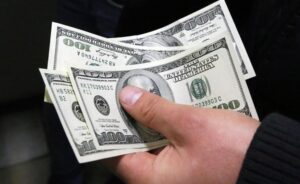
The U.S. dollar is declining against the euro and the Japanese yen and is rising against the pound sterling in trading on Tuesday.
The ICE-calculated index, which shows the dollar’s movement against six currencies (euro, Swiss franc, yen, Canadian dollar, pound sterling and Swedish krona), is up 0.17% in trading, while the broader WSJ Dollar Index is losing 0.05%.
The euro/dollar pair is trading at $1.0743 as of 7:34 a.m. Ksk on Tuesday, up from $1.0735 at the close of the previous session.
The U.S. currency pair with the yen dropped to 131.74 yen, compared to 131.89 yen in previous trading.
Pound to dollar exchange rate fell to $1.2173 against $1.2185 on Monday.
Investors are inclined to believe that the U.S. Federal Reserve (Fed) may be close to completing its tightening of monetary policy, despite hawkish statements from the regulator’s management.
Mary Daley, head of the Federal Reserve Bank (Fed) of San Francisco, said she believes the U.S. central bank will have to raise the rate above 5% to fight inflation.
Her colleague at the Atlanta Fed, Rafael Bostic, also confirmed his earlier opinion that the rate would be raised to more than 5%. Currently, its range is 4.25-4.5%.
Meanwhile, the easing of anti-coronaval restrictions in China is spurring demand for risky assets.
The Chinese yuan is up 0.1% at 6.7640 yuan/$1 from 6.7725 yuan/$1 the day before.
The ICE-calculated index showing the dollar’s dynamics against six currencies (euro, Swiss franc, yen, Canadian dollar, pound sterling and Swedish krona) is up 0.17% in trading, while the broader WSJ Dollar Index is losing 0.05%.
The euro/dollar pair is trading at $1.0743 as of 7:34 a.m. Ksk on Tuesday, up from $1.0735 at the close of the previous session.
The U.S. currency pair with the yen dropped to 131.74 yen, compared to 131.89 yen in previous trading.
Pound to dollar exchange rate fell to $1.2173 against $1.2185 on Monday.
Investors are inclined to believe that the U.S. Federal Reserve (Fed) may be close to completing its tightening of monetary policy, despite hawkish statements from the regulator’s management.
Mary Daley, head of the Federal Reserve Bank (Fed) of San Francisco, said she believes the U.S. central bank will have to raise the rate above 5% to fight inflation.
Her colleague at the Atlanta Fed, Rafael Bostic, also confirmed his earlier opinion that the rate would be raised to more than 5%. Currently, its range is 4.25-4.5%.
Meanwhile, the easing of anti-coronaval restrictions in China is spurring demand for risky assets.
The Chinese yuan is up 0.1% at 6.7640 yuan/$1 from 6.7725 yuan/$1 the day before.
EURO, pound, U.S. dollar, yen